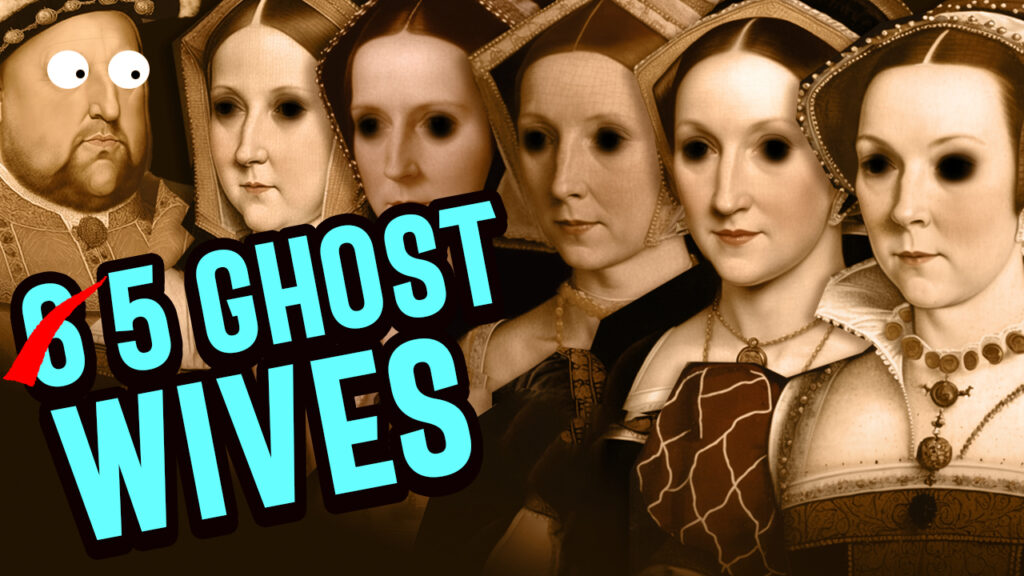
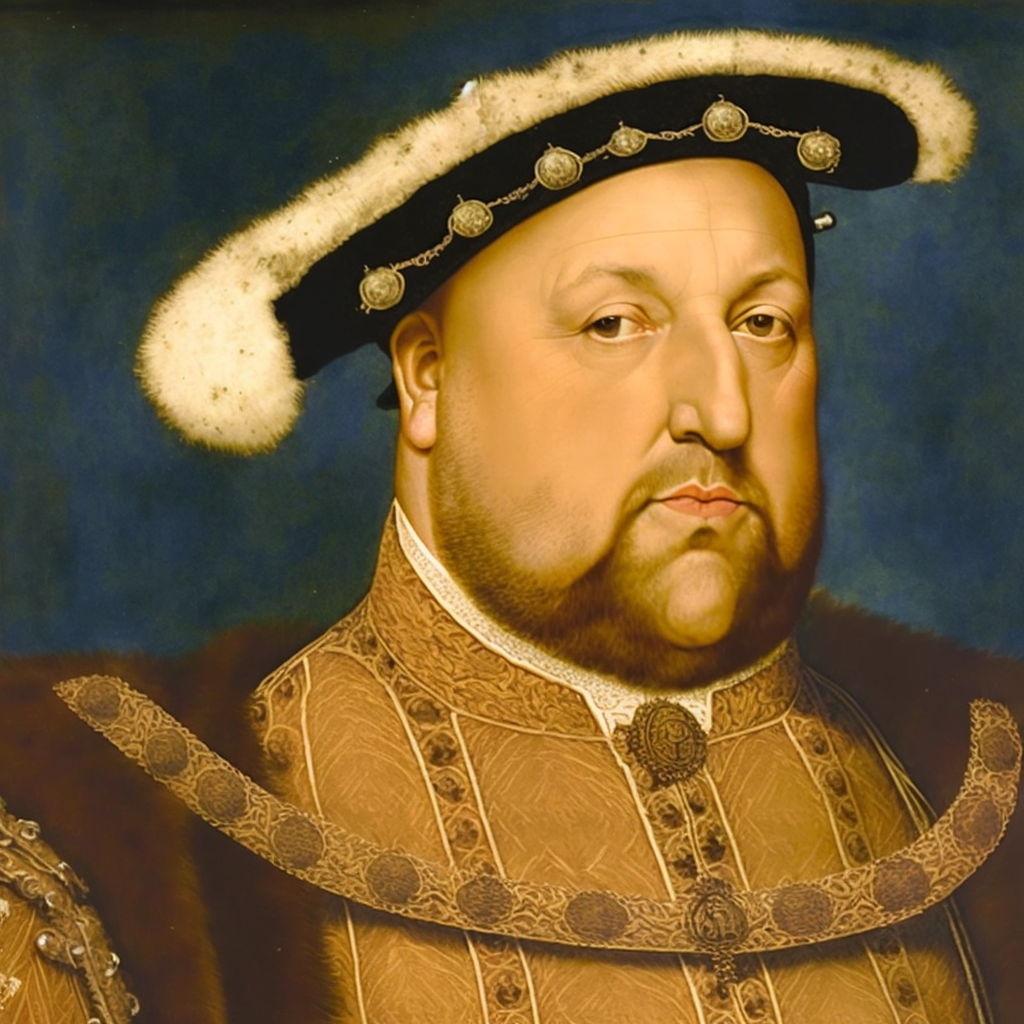
King Henry VIII had 6 wives. Legend had it that five of King Henry VIII’s wives still haunt England, doomed to wander amongst the loving for all eternity. Catherine of Aragon, her ghostly form draped in tattered robes, could be seen weeping in the chapel where she prayed for a son. Anne Boleyn’s spectral figure, her head still detached from her body, haunted the tower where she was imprisoned before her execution. Jane Seymour, her ghostly face eternally serene, floated through the halls where she once gave birth to the future king. The ghost of Catherine Howard, her screams still echoing through the castle, could be heard in the chamber where she was dragged away to her death. And finally, the spirit of Catherine Parr, who outlived the king and lived to old age, could be seen wandering the gardens, a peaceful smile on her face. But one wife was notably absent from this haunting: Anne of Cleves. Her life had been the least tragic of all Henry’s wives, and so her ghost was said to have moved on from the castle, finding peace in the afterlife.
Here is the fate of the other five ghost wives of King Henry VIII
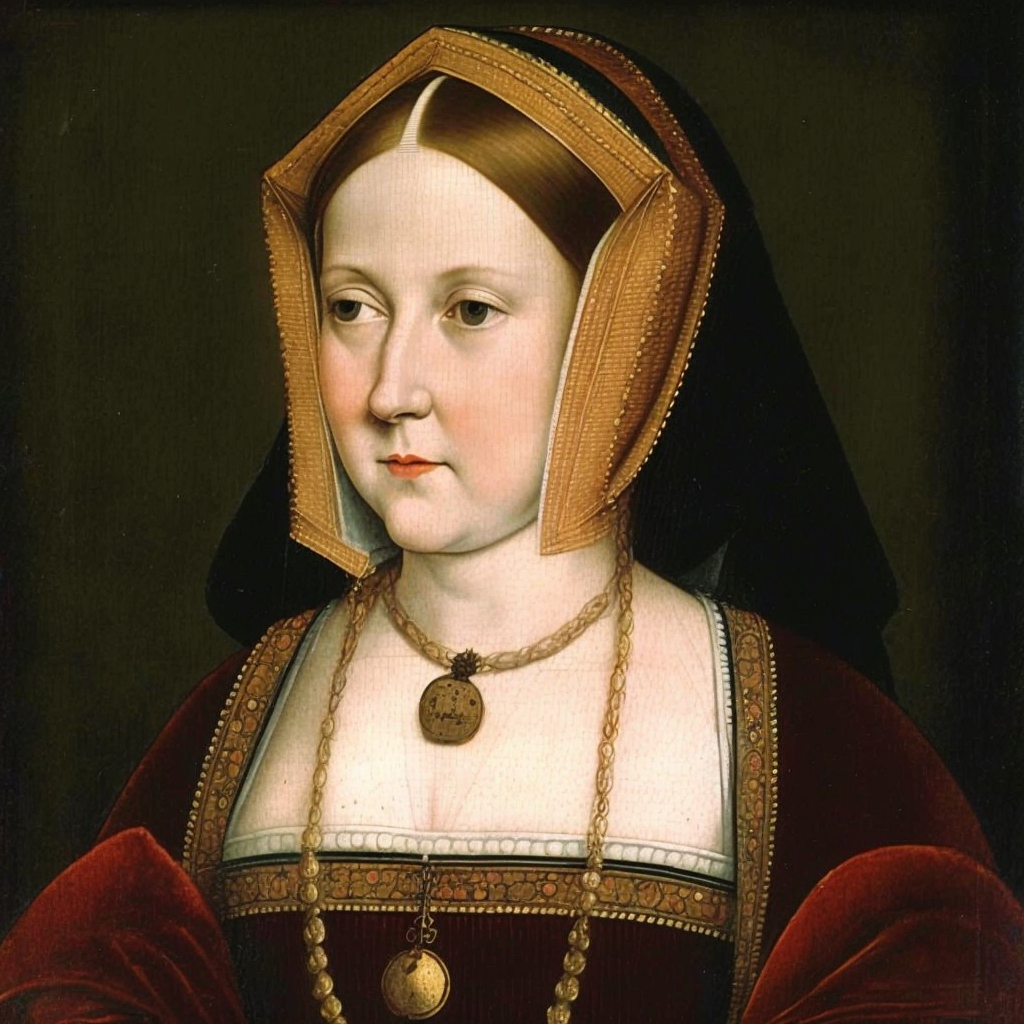
Catherine of Aragon
Before Henry VIII marriage:
Catherine of Aragon was born on December 16, 1485, in Alcalá de Henares, Spain. She was the youngest surviving child of King Ferdinand II of Aragon and Queen Isabella I of Castile, who is also known as the Catholic Monarchs. Catherine was raised to be a devout Catholic and received a humanist education. She was first married to Henry VIII’s older brother, Arthur, in 1501, but he died less than six months later.
After Henry VIII Marriage:
After Arthur’s death, Catherine remained in England as a widow. In 1509, Henry VIII, who had become king after his father’s death, married Catherine. They had a daughter, Princess Mary, but Catherine suffered several miscarriages and stillbirths, and the couple did not have any surviving sons. Henry became increasingly dissatisfied with the marriage and sought an annulment, citing Catherine’s previous marriage to his brother as an impediment to the marriage being valid.
How she died:
After years of legal battles, Catherine was ultimately divorced by Henry in 1533 and was exiled from court. She lived out the rest of her life in various castles and manors, including Kimbolton Castle, where she died on January 7, 1536, at the age of 50. The exact cause of her death is not known, but it is believed that she may have died from cancer or heart disease. Catherine was buried at Peterborough Cathedral, and her daughter Mary would later become Queen Mary I of England.
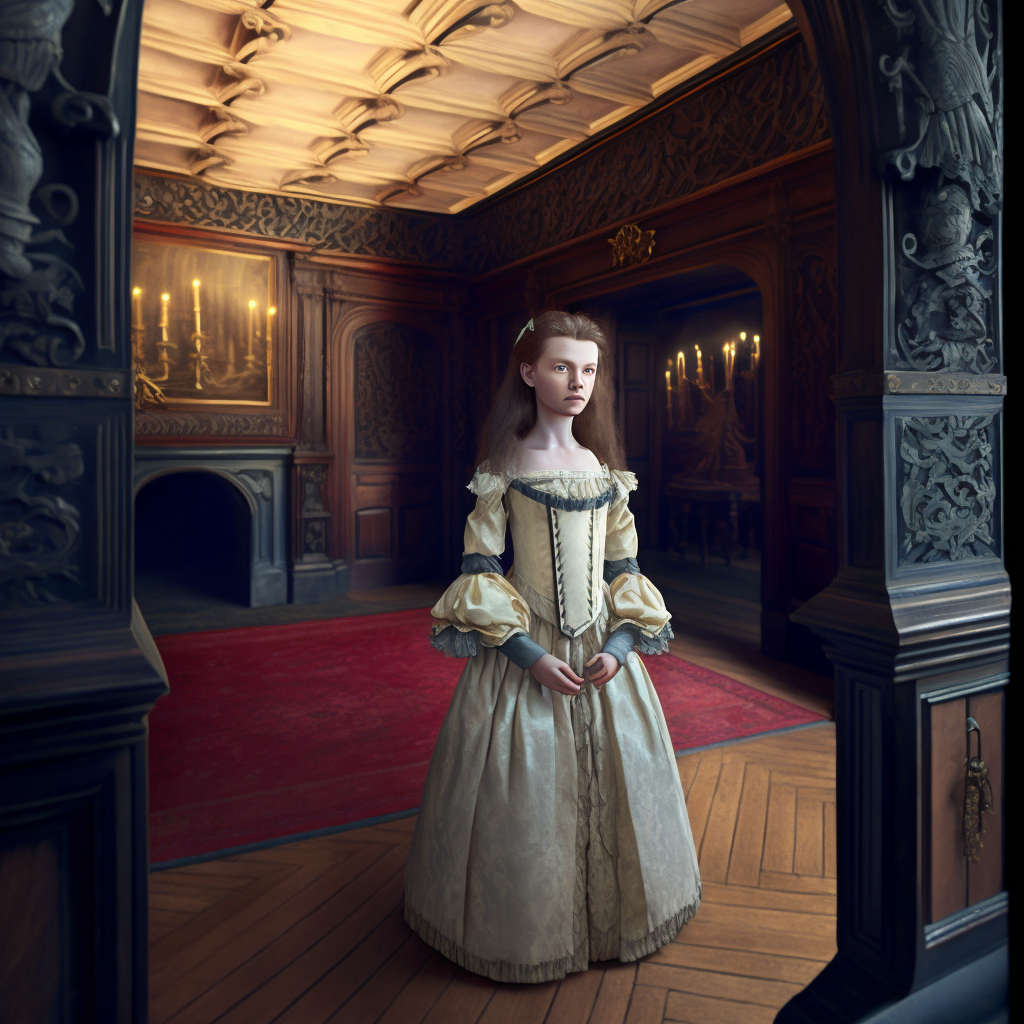
Her Ghost
As the moon rises over Castle Lodge, a chill wind blows through the attic corridors. Visitors to the castle report feeling an eerie presence watching them as they make their way through the empty rooms. Some have even felt a cold breath on the back of their necks, as if someone or something is standing right behind them.
But the most terrifying encounter is with the ghost of a teenage girl, dressed in Tudor costume. She walks the attic corridors and visits the nursery, her footsteps echoing through the halls. Some visitors claim to have seen her disappear through closed doors, leaving them with an overwhelming sense of dread.
Legend has it that this ghostly apparition is none other than Catherine of Aragon, the first wife of King Henry VIII. She has returned to the castle she once called home, drawn back by the happy memories she shared with her young husband, the Prince of Wales. But why does she linger in the afterlife? Some say it is because she is searching for something, a lost treasure or perhaps seeking revenge on those who wronged her.
Whatever the reason, the ghost of Catherine of Aragon continues to haunt Castle Lodge, a mysterious and eerie presence that sends shivers down the spines of those who dare to enter. Will you be brave enough to face her ghostly apparition and unravel the mystery of her restless spirit?
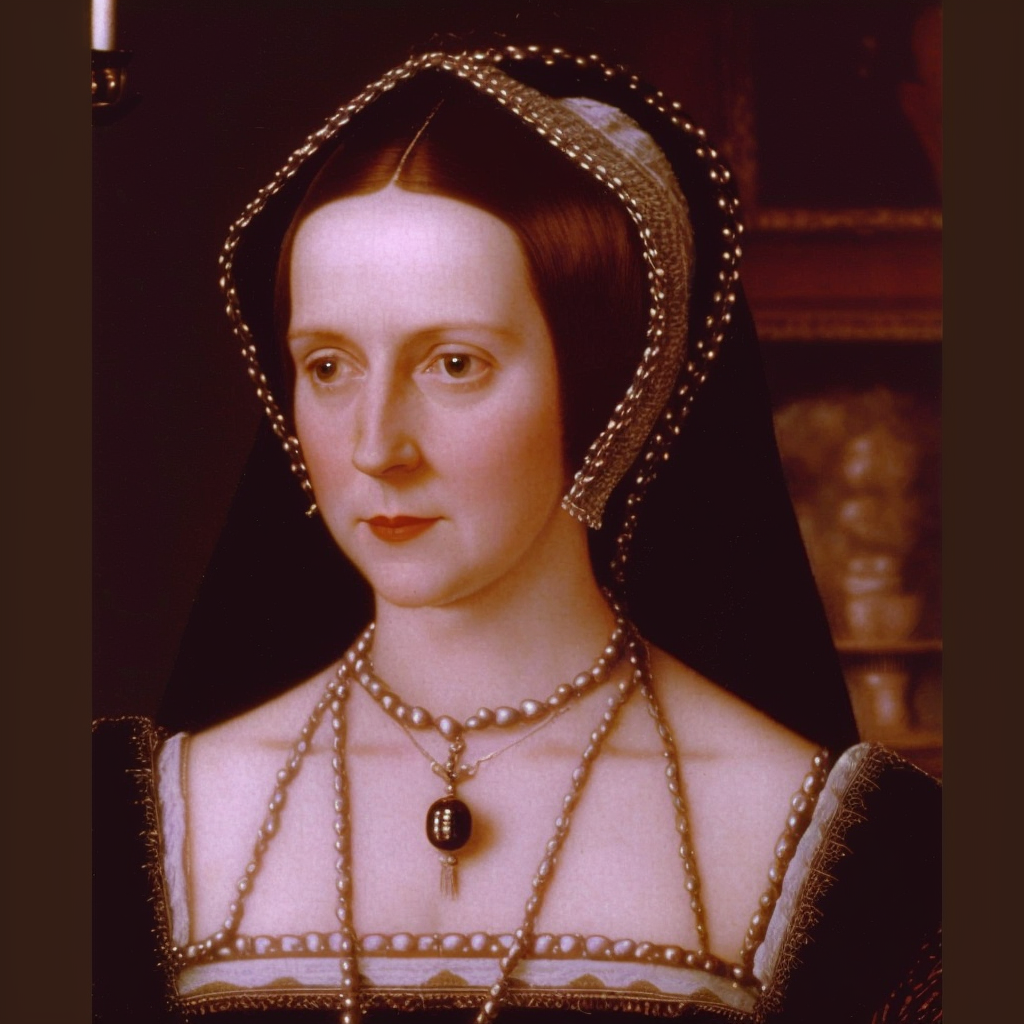
Anne Boleyn
Before Henry VIII marriage:
Anne Boleyn was born in England in 1501, the daughter of Sir Thomas Boleyn, a courtier in the service of King Henry VIII. Anne spent much of her childhood in France and the Netherlands, where she was educated and served as a maid of honor to the Archduchess Margaret of Austria. In 1522, Anne returned to England and entered the service of Queen Catherine of Aragon, Henry VIII’s first wife.
After Henry VIII Marriage:
Anne caught the eye of Henry VIII, who was married to Catherine at the time. Henry sought an annulment from Catherine in order to marry Anne, but the Pope refused to grant the annulment. In 1533, Henry broke with the Catholic Church and declared himself the head of the Church of England, which allowed him to annul his marriage to Catherine and marry Anne. Anne and Henry were married on January 25, 1533. Anne gave birth to a daughter, Elizabeth, in September of that year, but she failed to produce a male heir, and Henry began to grow dissatisfied with her.
How she died:
Anne was accused of adultery, incest, and treason and was put on trial in May 1536. She was found guilty and was beheaded on May 19, 1536, at the Tower of London. Anne’s marriage to Henry was annulled, and their daughter Elizabeth was declared illegitimate. The exact reasons for Anne’s downfall are still debated by historians, but it is believed that she may have fallen out of favor with Henry because she failed to produce a male heir and because of political factors related to the English Reformation. After her death, Anne was buried in an unmarked grave in the Chapel of St. Peter ad Vincula at the Tower of London.
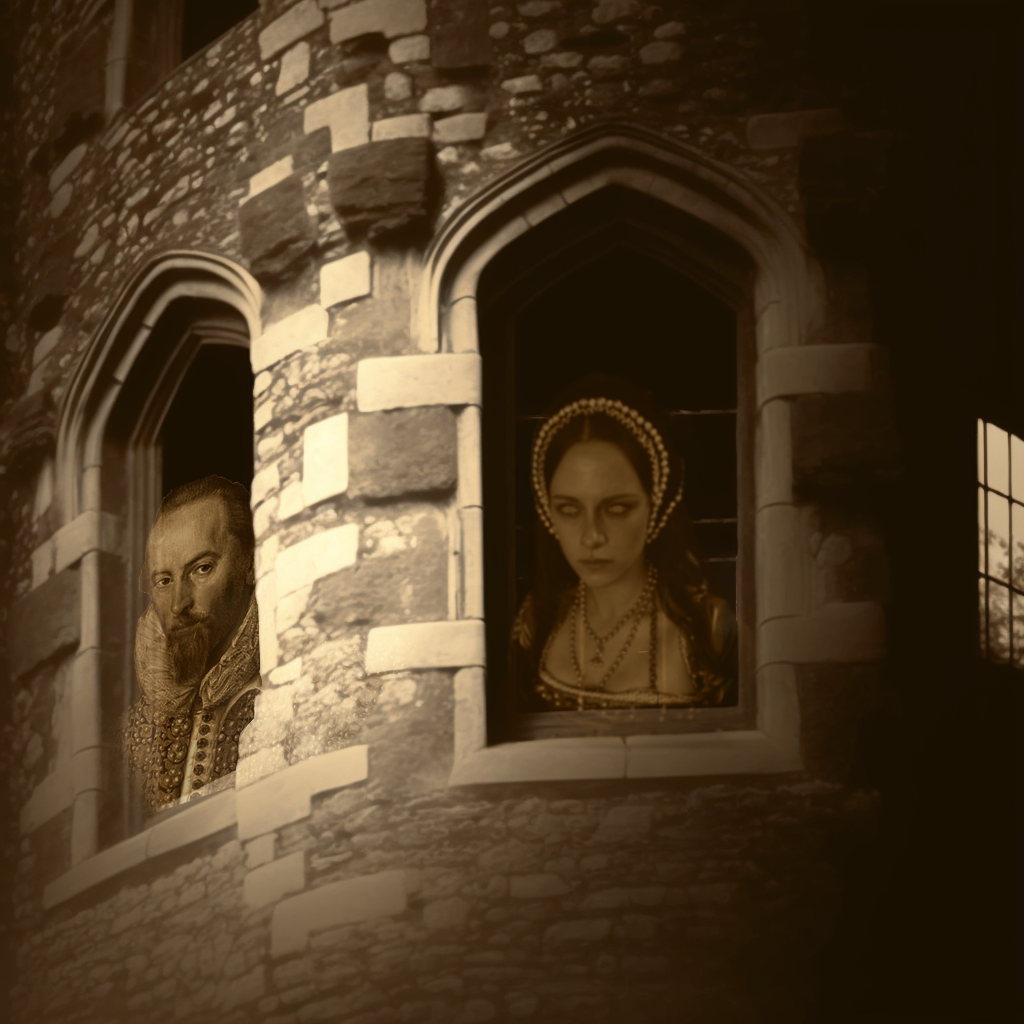
Her Ghost
Of all the spirits that wander the halls of England’s castles, none is more notorious than the ghost of Anne Boleyn. Even in death, her presence lingers on, haunting the very places where she once lived, loved, and died.
At the Tower of London, where she met her tragic end, Anne’s ghost still roams the halls. It is said that she appears in the place where she was executed on the 19th of May in 1536, her spirit forever trapped in the moment of her death.
But it is not just the Tower that bears witness to Anne’s restless spirit. At Hever Castle, her childhood home, she is said to manifest each Christmas beneath a great oak tree where she and Henry once courted. Her ghost walks across the bridge that crosses the River Eden on the castle grounds as if searching for something that she lost so long ago.
Even at Windsor Castle, the largest and oldest occupied castle in the world, Anne’s ghost has been seen. She stands at the window in the Dean’s Cloister as if waiting for a lover who will never come. In the corridors, she runs screaming, clutching her head as if trying to escape some unseen terror.
Hampton Court, too, is said to be haunted by the ghost of Anne Boleyn. She wears a blue or black dress, and in some sightings, she is headless, as if reliving the grisly moment of her execution.
At Rochford Hall in Essex, where King Henry VIII first set eyes on the young Anne, there are rumors of a secret tunnel system beneath the house that he used to escape undetected. It is said that Anne’s ghost still walks the halls of the manor, a headless specter that leaves behind a chill that can be felt long after she is gone.
But perhaps the most terrifying story of all is the one told at Blickling Hall in Norfolk. It is said that on the anniversary of her execution, Anne’s headless spirit arrives at the hall, clutching her severed head. She travels in a phantom carriage drawn by a headless coachman and four headless horses. When she arrives, the carriage and horses vanish, leaving Anne to roam the halls and grounds until sunrise. It is a haunting image that is sure to chill even the bravest of souls.
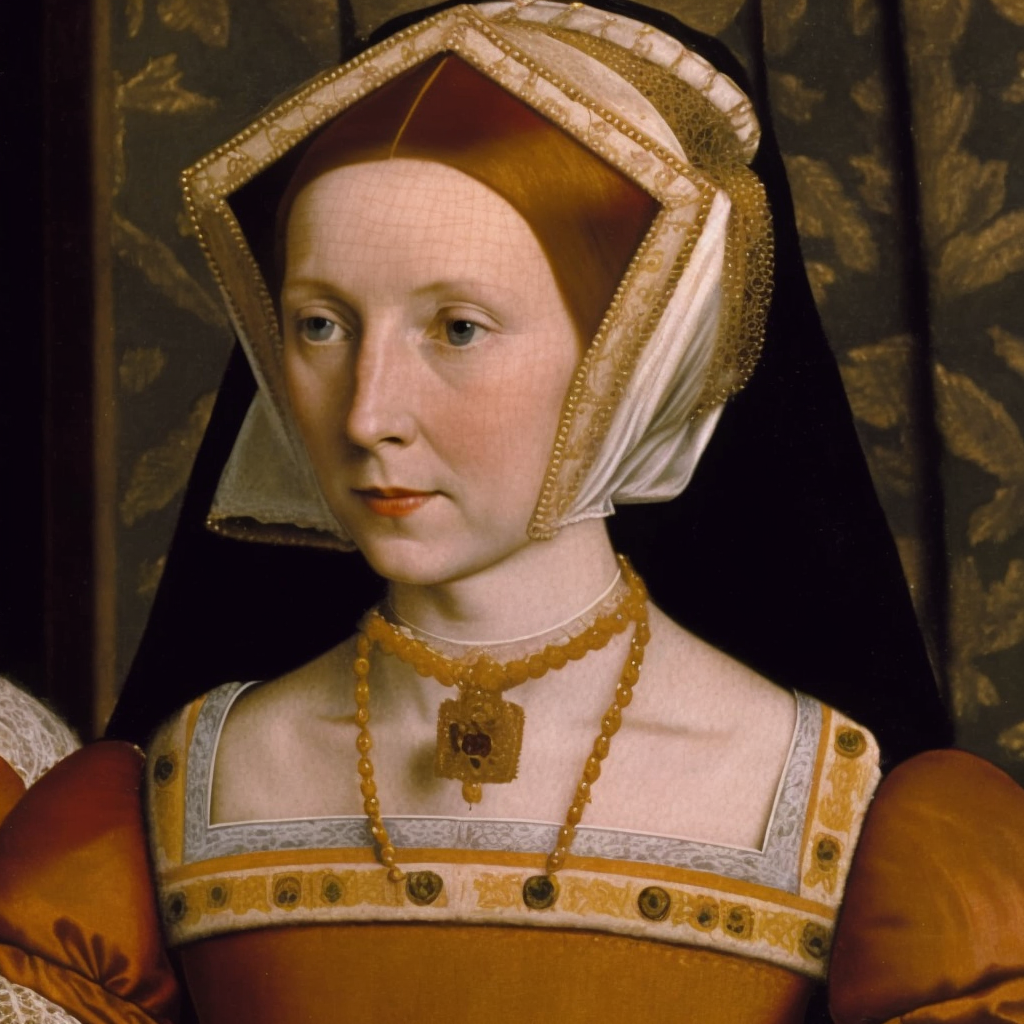
Jane Seymour
Before Henry VIII marriage:
Jane Seymour was born in England in about 1508, the daughter of Sir John Seymour, a courtier in the service of King Henry VIII. Little is known about Jane’s early life, but it is believed that she received a typical education for a noblewoman of her time. She entered the service of Queen Catherine of Aragon, Henry VIII’s first wife, and later became a lady-in-waiting to Anne Boleyn, Henry’s second wife.
After Henry VIII Marriage:
Henry VIII became interested in Jane while he was still married to Anne Boleyn. After Anne’s execution, Henry began to court Jane, and they were married on May 30, 1536, just 11 days after Anne’s death. Jane gave Henry the son he had long desired, when she gave birth to Prince Edward on October 12, 1537.
How she died:
Jane Seymour died on October 24, 1537, just 12 days after giving birth to Prince Edward. The exact cause of her death is not known, but it is believed that she died of complications from childbirth, possibly puerperal fever. Jane was buried at St. George’s Chapel, Windsor Castle, and Henry VIII would later be buried next to her. Jane is often remembered as the wife who gave Henry VIII his long-awaited male heir, but she was also known for her gentle and kind nature.
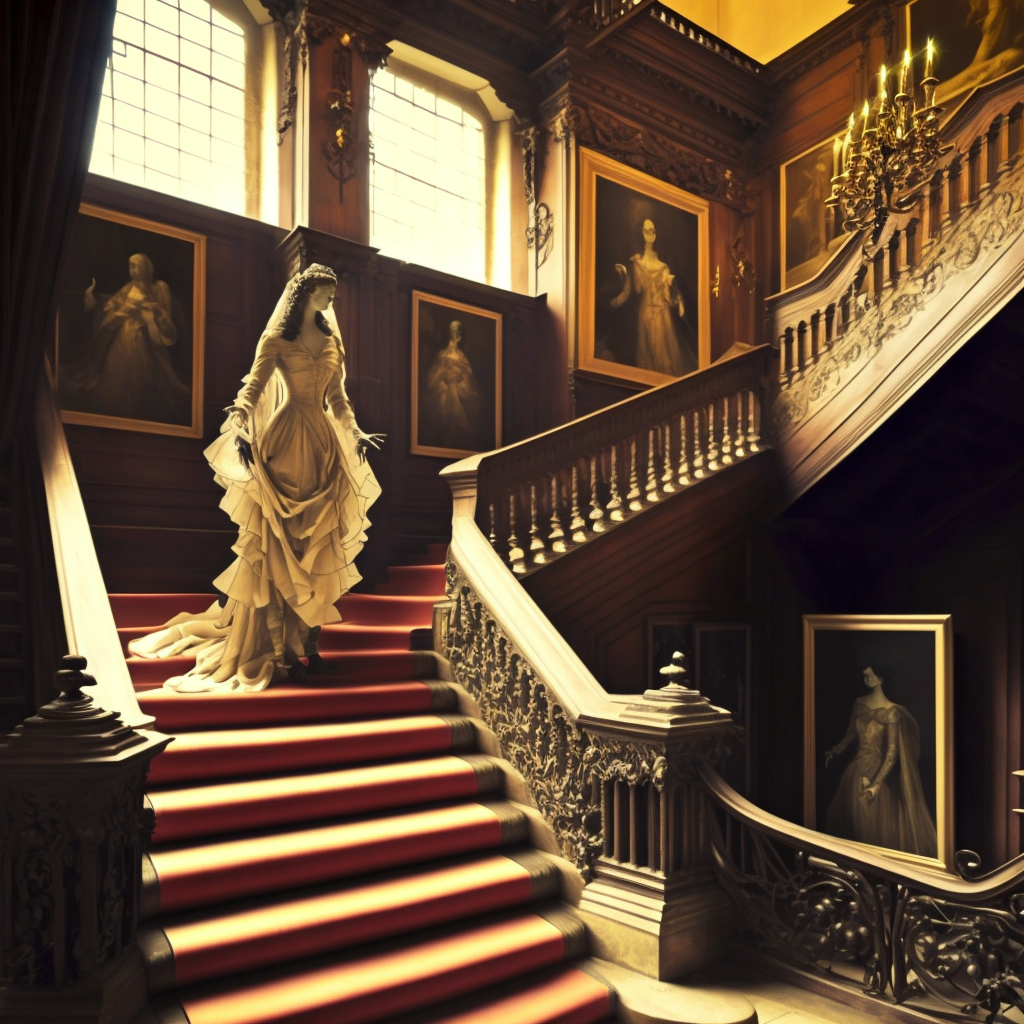
Her Ghost
The walls of Hampton Court Palace hold many secrets and stories, and perhaps none is more haunting than that of Jane Seymour. Though her chambers are long gone, the essence of the pain and joy that once occurred there remains. It is said that Jane’s ghost roams the palace grounds, sometimes visible to those with a sensitive disposition.
On the anniversary of Edward’s birth, Jane is known to appear on the Silverstick Stairs, clad in a flowing white robe and clutching a candle. The staircase leads to the very room where she gave birth to her son and later died. But the room is no longer accessible to the public, so visitors must make do with seeing Jane on the stairs.
Some say that Jane’s guilt about supplanting her queen never left her, and it is this heavy conscience that keeps her earthbound. In order to find peace, she seeks forgiveness from none other than Anne Boleyn herself. Perhaps one day her soul will find the absolution it seeks, but until then, her ghostly presence will continue to haunt the halls of Hampton Court Palace.
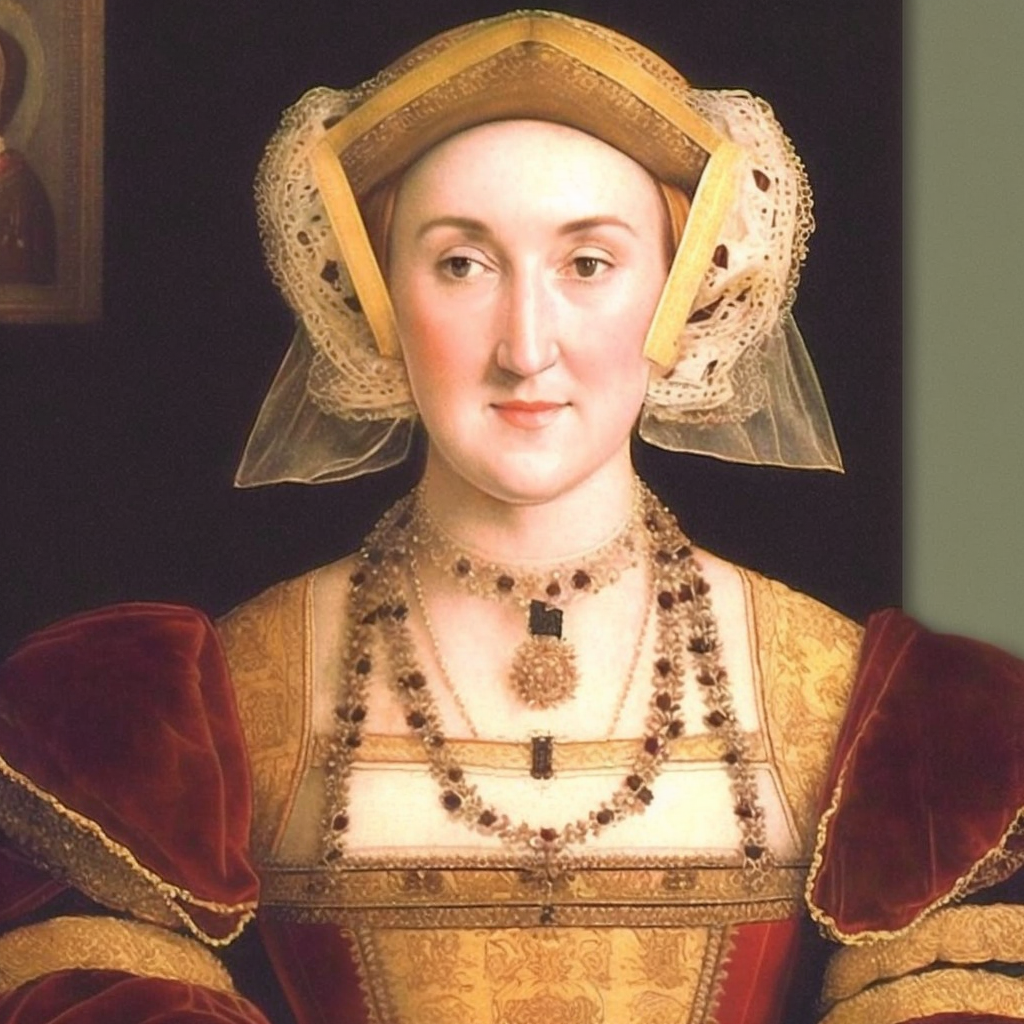
Anne of Cleves
Before Henry VIII marriage:
Anne of Cleves was born on September 22, 1515, in Düsseldorf, Germany, the daughter of John III, Duke of Cleves. She was raised in the Lutheran faith and received a humanist education. In 1539, King Henry VIII began to consider a political marriage with Anne in order to form an alliance with the Protestant German states. After negotiations, Henry agreed to the marriage, and Anne traveled to England to meet her new husband.
After Henry VIII Marriage:
Henry VIII was disappointed with Anne’s appearance when they met in person and the marriage was not consummated. He began to seek an annulment almost immediately after the wedding, claiming that the marriage had not been valid because he had not given his consent. The annulment was granted in July 1540, and Anne was given a generous settlement that included several properties and a pension. She was also granted the title of “The King’s Beloved Sister”. Anne remained in England and was on friendly terms with Henry and his subsequent wives, but she never remarried.
How she died:
Anne of Cleves died on July 16, 1557, at 41. The exact cause of her death is not known, but it is believed that she may have died from cancer. Anne was buried in Westminster Abbey, and her tomb is inscribed with the words “Anna, Queen of England, Sister of Wilhelm, Duke of Jülich-Kleve-Berg, Born 1515, Died 1557”. Despite the short-lived and unconsummated marriage, Anne of Cleves is remembered as one of Henry VIII’s most successful wives due to the generous settlement she received after their annulment.
Her Ghost
No Ghost Stories
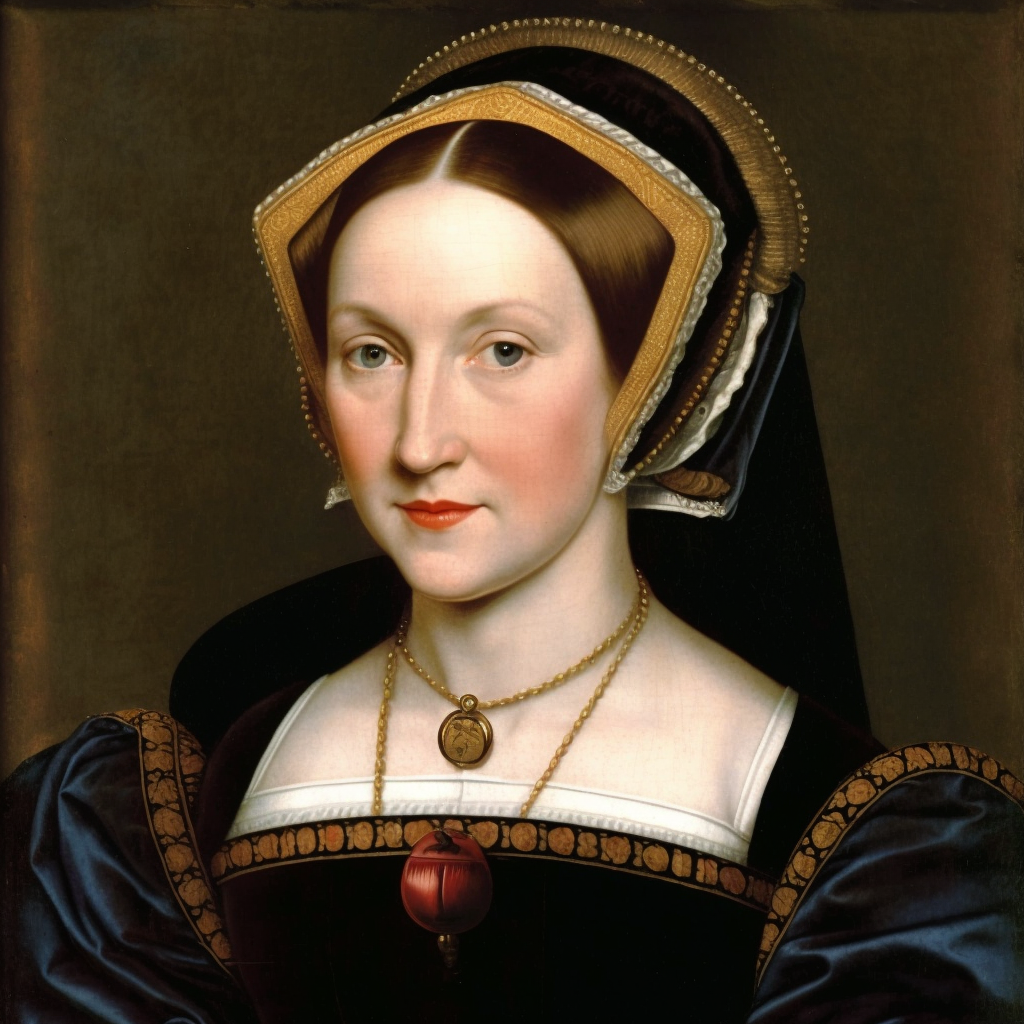
Catherine Howard
Before Henry VIII marriage:
Catherine Howard was born in about 1524, the daughter of Lord Edmund Howard and Joyce Culpeper. She was the cousin of Henry VIII’s second wife, Anne Boleyn. Catherine was educated at home and in various households, including the household of her step-grandmother, the Dowager Duchess of Norfolk. She was known for her beauty and vivacious personality.
After Henry VIII Marriage:
Catherine Howard caught the eye of King Henry VIII, who was still mourning the loss of his third wife, Jane Seymour. They were married on July 28, 1540, when Catherine was about 16 years old and Henry was 49. Catherine was not a suitable match for the king, as she had a reputation for promiscuity and had engaged in affairs prior to her marriage. She continued to have affairs while married to Henry, including with Thomas Culpeper, a member of the king’s court.
How she died:
Catherine Howard’s affairs were discovered by Henry’s advisors, and she was arrested and charged with treason. She was found guilty and sentenced to death. Catherine was beheaded at the Tower of London on February 13, 1542, at the age of 17 or 18. She is remembered as one of Henry VIII’s most tragic wives, as she was young and inexperienced and had little control over her own fate.
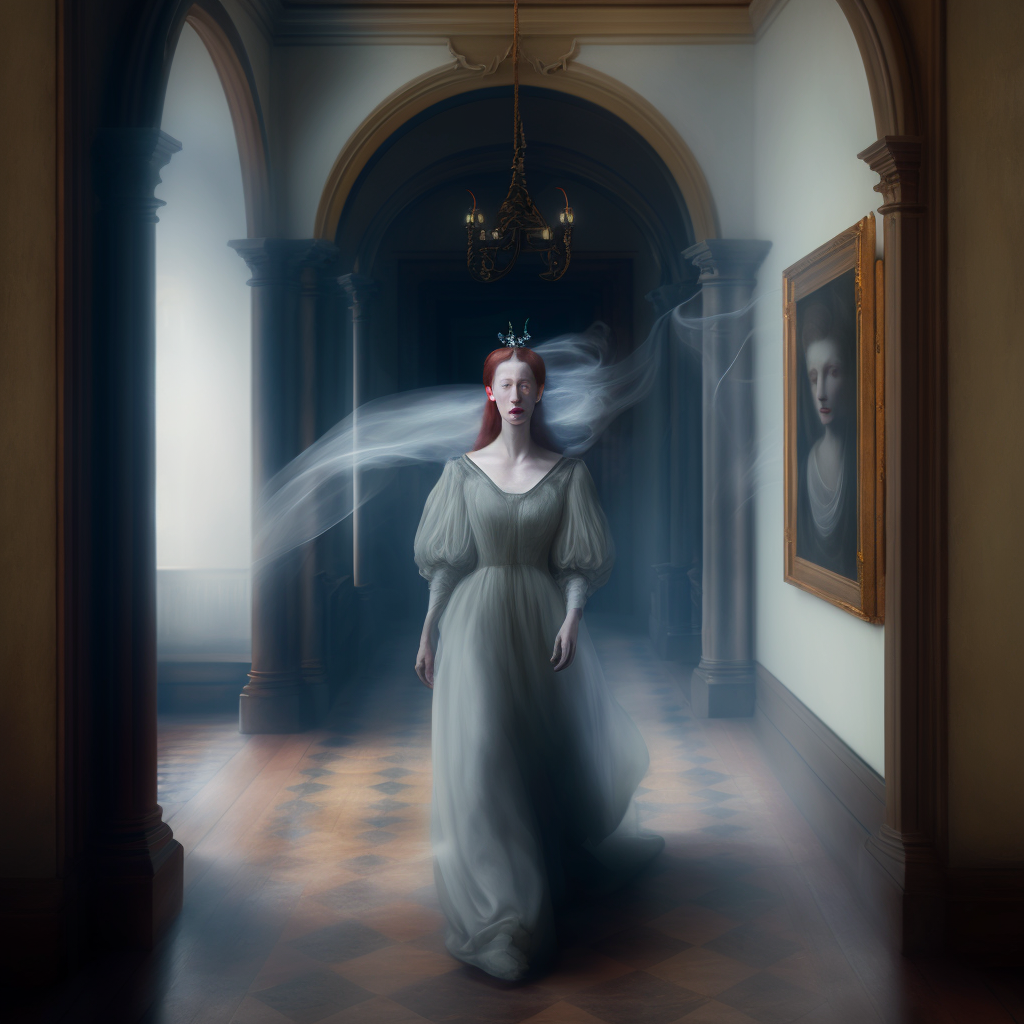
Her Ghost:
Legend has it that the ghost of Catherine Howard haunts the haunted gallery at Hampton Court Palace, where she was famously arrested for adultery and treason. Her tormented cries can sometimes be heard echoing through the halls as she desperately tries to reach the king and plead for forgiveness. Despite the fact that her original apartments are long gone, this stretch of the Tudor route remains the most haunted in the entire palace.
Many have reported ghostly sightings and eerie experiences along the gallery. Some have even fainted in terror at the sight of her ghostly apparition. It is said that Catherine once managed to escape her guards and ran down the gallery, hoping to find refuge in the Chapel Royal where Henry was praying. Her screams and pleas for mercy were to no avail, however, and she was ultimately beheaded.
The gallery has since been named after Catherine’s ghost and visitors often report feeling chills and strange sensations as they walk through the haunted space. Some have even witnessed unexplained moving shadows and felt as though they were being watched by an unseen presence. It seems that even in death, Catherine is unable to find peace and her restless spirit continues to haunt the palace to this day.
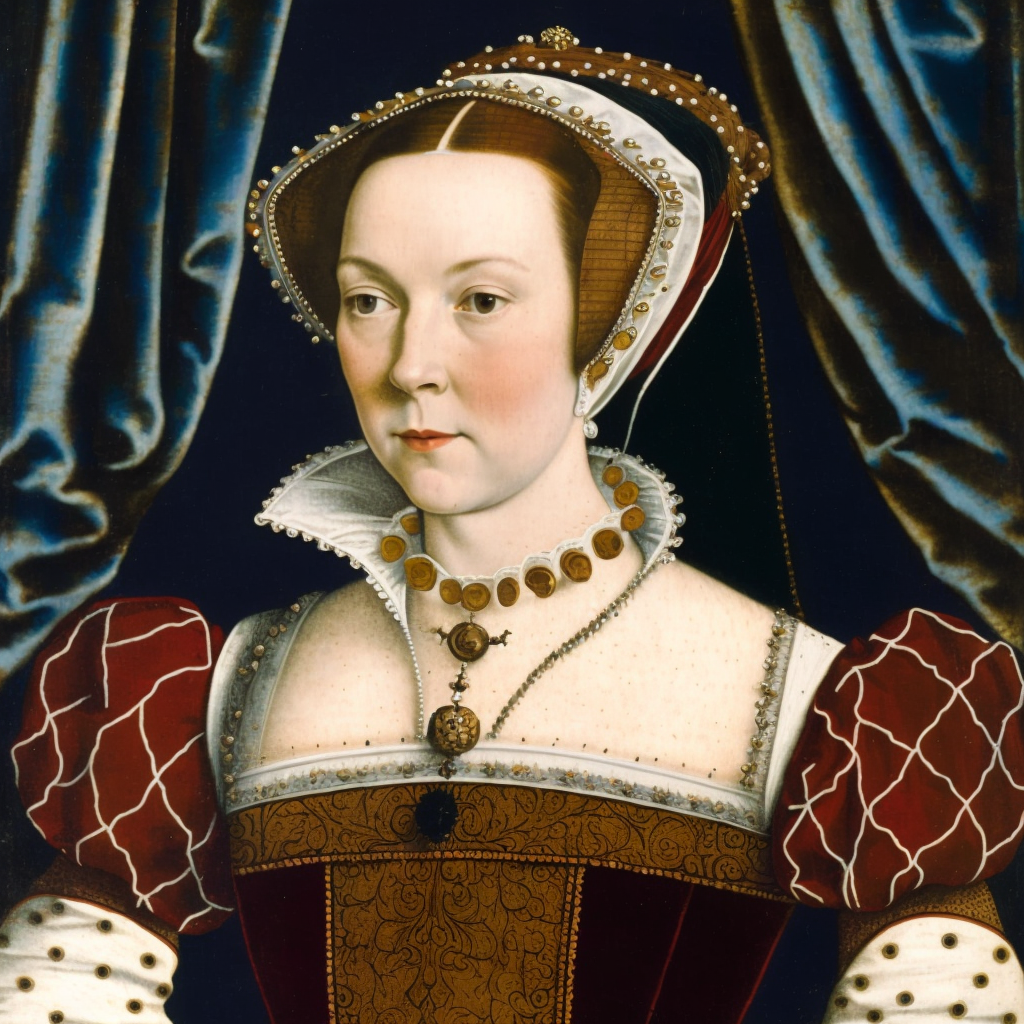
Catherine Parr
Before Henry VIII marriage:
Catherine Parr was born in 1512, the daughter of Sir Thomas Parr, a courtier and member of the gentry. She was well-educated and interested in the Protestant religion, and she married her first husband, Edward Borough, when she was about 18 years old. After his death, she married her second husband, John Neville, Lord Latimer, in 1534. She became known for her intelligence and her religious views, which were sympathetic to the Reformation.
After Henry VIII Marriage:
Catherine Parr caught the eye of King Henry VIII, who was looking for a sixth wife. They were married on July 12, 1543, when Catherine was about 31 years old and Henry was 52. Catherine became a stepmother to Henry’s three children, Mary, Elizabeth, and Edward, and she was known for her kindness and her efforts to reconcile the family. She was also a strong advocate for the Protestant cause and used her position to promote religious reform.
How she died:
Catherine Parr outlived Henry VIII and went on to marry her fourth husband, Thomas Seymour, who was the brother of Henry’s third wife, Jane Seymour. Catherine became pregnant but died soon after giving birth to a daughter, Mary Seymour, in August 1548. The exact cause of her death is not known, but it is believed that she may have died from complications of childbirth or puerperal fever. Catherine is remembered as a queen who used her position to advocate for religious reform and promote education for women.
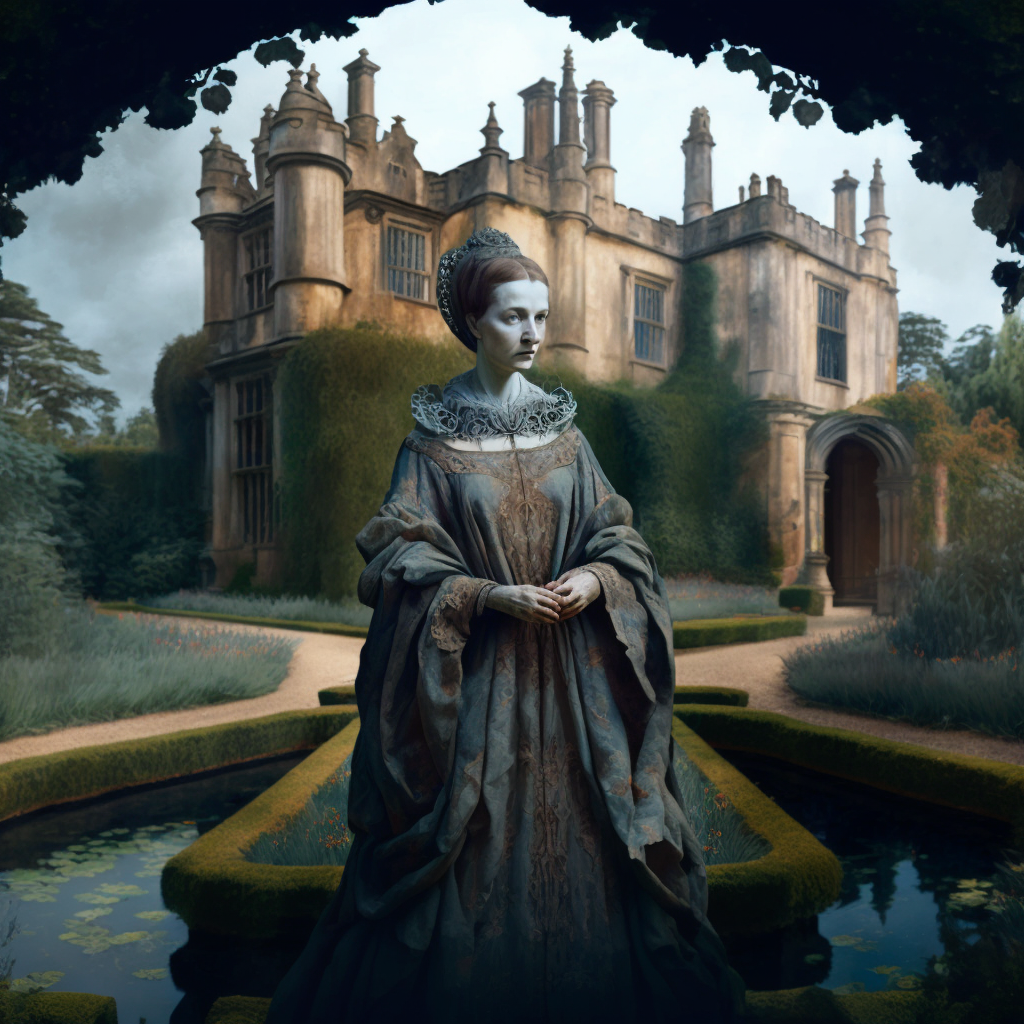
Her Ghost:
Legends of the ghost of Catherine Parr have circulated for centuries, haunting the halls and gardens of Sudeley Castle and Snape Castle. Some say that she wanders the grounds dressed in a spectral green, searching for her lost child. Others have reported seeing her gazing longingly out of a window, her fair hair falling over a blue Tudor dress.
But not all of Catherine’s ghostly apparitions are so benign. Some have reported hearing eerie footsteps, as if someone were following them through the castle’s darkened halls. Others have felt a cold chill, as if the air around them had suddenly turned frigid.
It is said that Catherine’s ghost is a harbinger of tragedy, a warning of impending doom. For those who dare to venture too close to her spectral form, there is no telling what horrors might await them. Some say that her ghost is cursed to wander the earth until she can find peace, but others believe that she is seeking revenge for some long-forgotten injustice.
Whatever the truth of Catherine Parr’s ghostly presence, there can be no doubt that she remains a haunting and mysterious figure, one whose legacy will continue to be felt for generations to come.
